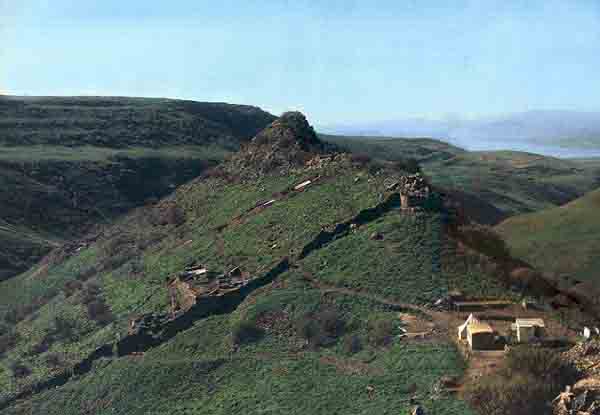
Rarely do literary sources and archaeology supplement one another so beautifully as in the case of Gamla. This is all the more exciting because Gamla is immensely rich both historically and now, after 14 years of excavation, archaeologically.1
Long before the actual site was identified, Gamla was well known from the writings of the first-century Jewish historian Josephus as the place of a crucial battle between Jews and Romans. The battle occurred at the beginning of the First Jewish Revolt against Rome, which culminated in the destruction of Jerusalem and the burning of the Temple in 70 C.E.a
To understand the battle at Gamla, we must first understand the topography that provides its breathtaking setting. Gamla is located on the Golan Heights, on a narrow, pointy spur high above the Sea of Galilee.b It is enclosed on all sides by steep ravines, except to the east, where it is connected by a slim saddle to the plateau above. Huge boulders on top of the hill make the spur resemble a gigantic reclining camel with a hump, which doubtless led early settlers in about 150 B.C.E. to name the site Gamla—“camel” in Aramaic.
Already a library member? Log in here.
Institution user? Log in with your IP address.

